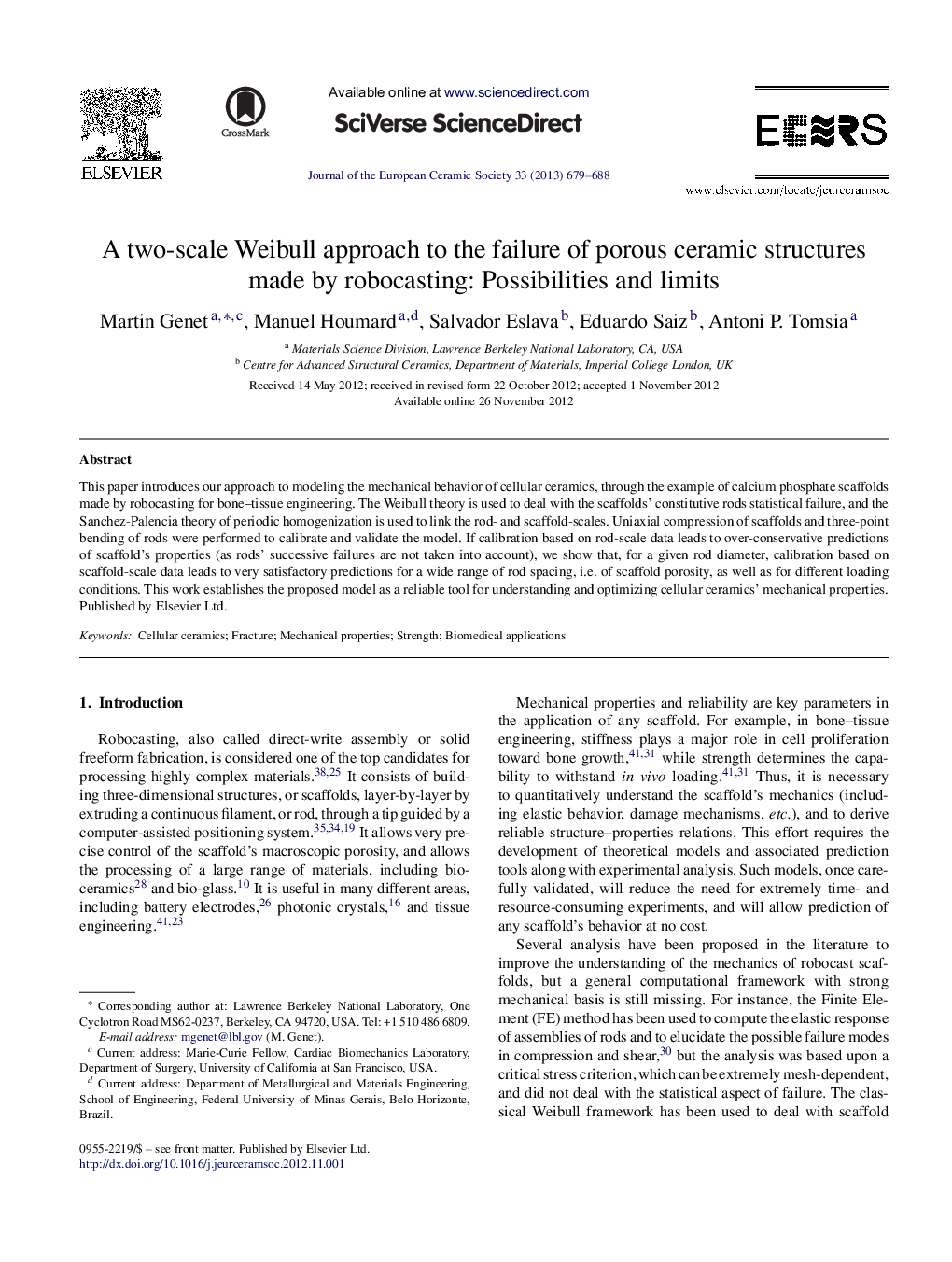| Article ID | Journal | Published Year | Pages | File Type |
|---|---|---|---|---|
| 1475984 | Journal of the European Ceramic Society | 2013 | 10 Pages |
This paper introduces our approach to modeling the mechanical behavior of cellular ceramics, through the example of calcium phosphate scaffolds made by robocasting for bone–tissue engineering. The Weibull theory is used to deal with the scaffolds’ constitutive rods statistical failure, and the Sanchez-Palencia theory of periodic homogenization is used to link the rod- and scaffold-scales. Uniaxial compression of scaffolds and three-point bending of rods were performed to calibrate and validate the model. If calibration based on rod-scale data leads to over-conservative predictions of scaffold's properties (as rods’ successive failures are not taken into account), we show that, for a given rod diameter, calibration based on scaffold-scale data leads to very satisfactory predictions for a wide range of rod spacing, i.e. of scaffold porosity, as well as for different loading conditions. This work establishes the proposed model as a reliable tool for understanding and optimizing cellular ceramics’ mechanical properties.
